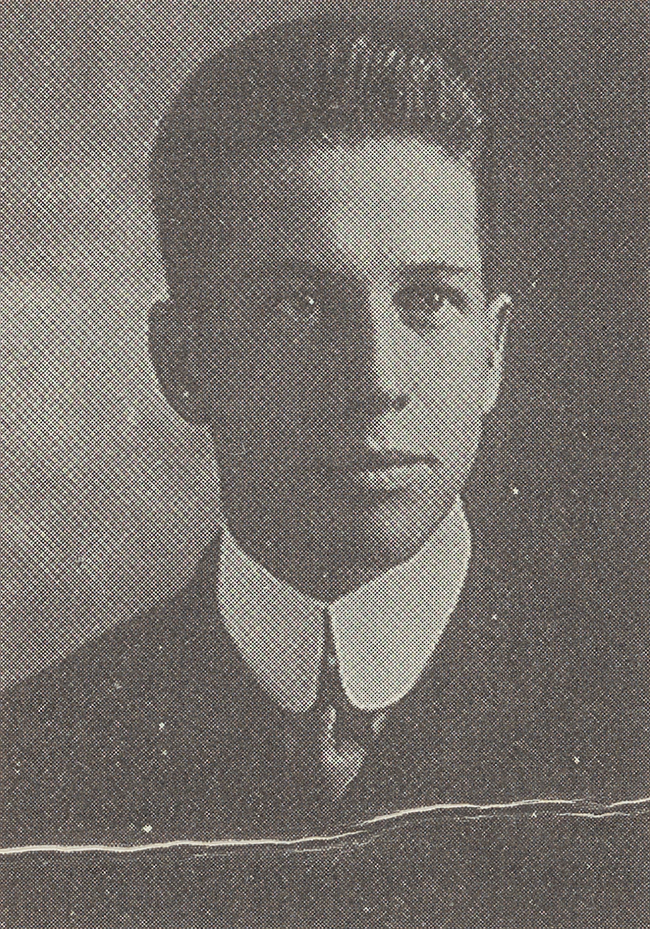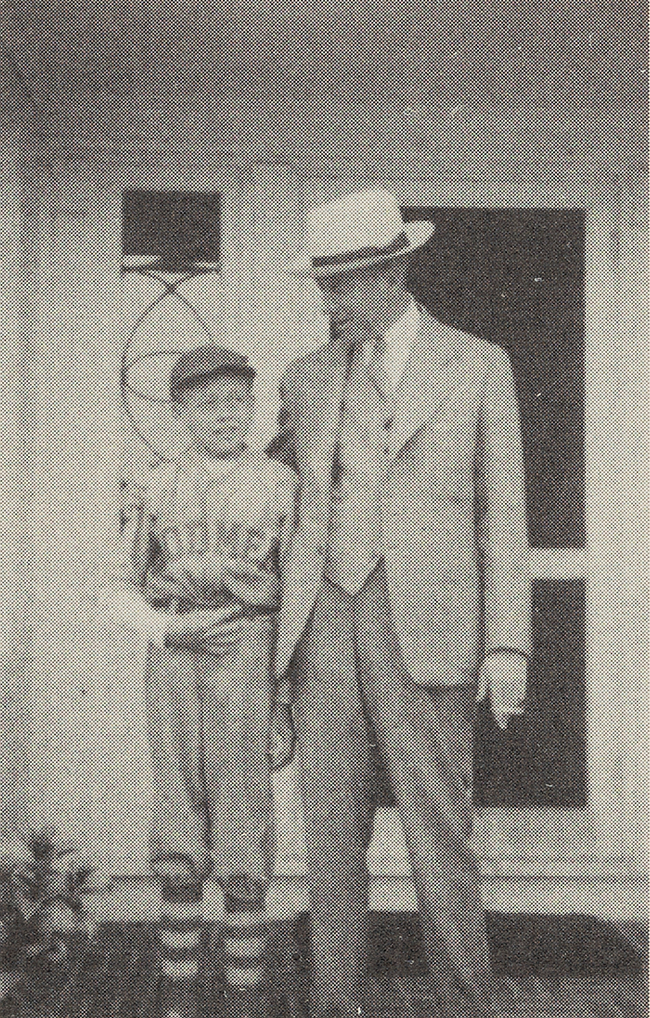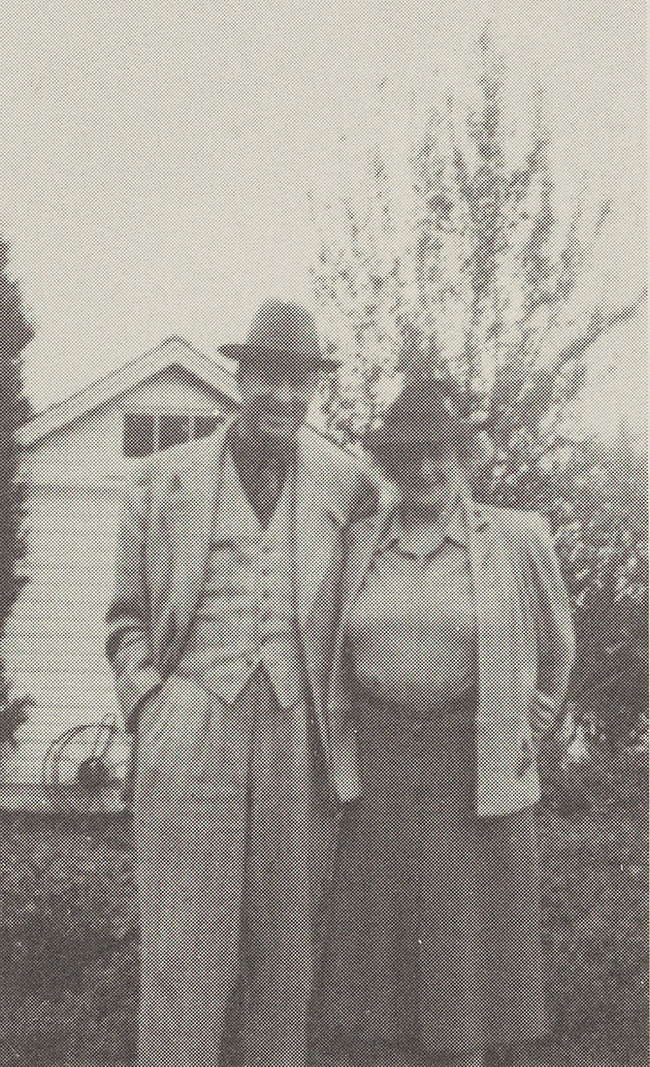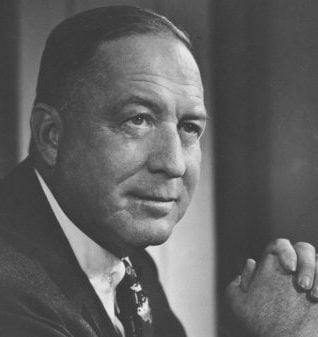U.S. Steel’s chief financial officer and an ardent supporter of education. Fund at The Trust supports a variety of charitable causes.
Enders M. Voorhees (1891-1980)
When Enders Voorhees was offered the position of secretary-treasurer of the Johns-Manville Corporation, the president asked him if his salary would be satisfactory.
“No,” said Enders. “What would be satisfactory would be a salary three times as much.”
“Why, that’s more than I’m making!” said the president.
Enders replied calmly: “I’ll tell you what. I’ll make a deal with you. I’ll work for you for two years for nothing. At the end of that time, if you don’t think I’m worth it, I’ll quit and you won’t owe me anything. But if you think I’m worth it, I want every penny that I’ve asked for.” Two years later, Johns-Manville paid Enders every penny.
Enders McClumpha Voorhees was born on April 28, 1891, in Amsterdam, New York, 35 miles northwest of Albany, in the heart of the beautiful Mohawk Valley. The son of James and Margaret Voorhees, Enders was the youngest of five children.

After high school, Enders enrolled at Dartmouth College. He graduated in 1914 with a Bachelor of Science degree in business administration and then worked his way through Europe. He returned to Dartmouth to take courses at the Amos Tuck School of Finance, then went to Boston to begin his career.
His first job was as a junior accountant in the certified public accounting firm of Hollis H. Sawyer & Co. At the same time, he attended Boston’s Bentley School of Accounting, and a year later, he went to the Philippines as an auditor with the Pacific Commercial Company, an importing and exporting firm.
During World War I, Enders served as a second lieutenant at Camp Custer Second Officers’ Training Camp near Battle Creek, Michigan, and then as a first lieutenant and adjutant of the 73rd Field Artillery at Camp Jackson, South Carolina.
Back in civilian life, he became assistant comptroller for the United States Rubber Company in Naugutuck, Connecticut, and then general auditor and assistant to the president of Ajax Rubber Company in Racine, Wisconsin. He learned industrial engineering with William A. Harriman & Company and Sanderson and Porter, and in 1927, began a 10-year association with the Johns-Manville Corporation based in Denver, first as general auditor, and then as secretary-treasurer and vice president.
Enders Voorhees was an intriguing, complex man, always sure of himself. He was essentially self-made, with the help of a good start from his Aunt Sarah, who left everything she had to him and charged him with making sure everyone in the family was taken care of. Throughout his life, he honored her wishes.

On September 15, 1923, Enders married Blanche Pauline “Polly” Andrews. Unfortunately, they could not have children of their own. But soon after their wedding, they met Dr. Ross E. Savage. At the time, Savage was divorced and raising two children alone. Over the next couple of summers, he and Enders became friends, vacationing at the same Massachusetts resort. Eventually, Enders and Polly took Savage’s two children, Priscilla and John, into their home.
Priscilla’s memories of “Aunt Polly” are glowing: She wore beautiful clothes, had beautiful taste, ran a wonderful home, had a sweet disposition, and was surrounded by many friends who understood and loved her. “They did an awful lot for us,” Priscilla remembers. “It really was a wonderful life.”
After the children were grown, Enders and Polly moved to an apartment at Fifth Avenue and 77th Street in Manhattan. Around 1940, they bought a summer home at Cape Vincent, on the New York side of the St. Lawrence River. The area reminded Enders of the Mohawk Valley. “I felt that I was coming home,” he said.
He named his Cape Vincent home “Pennywise.” He kept his boat there and indulged his love for fishing on the St. Lawrence River and Lake Ontario. Most of the local fishing was for smallmouth bass, but each summer he packed up his gear and headed into northern Ontario for a couple of weeks to the Ristigouche Salmon Club. He brought his catch home and helped cook frequent dinners with friends of poached or steamed salmon.
In 1937, Enders began a 19-year association with the United States Steel Corporation in Pittsburgh that would bring him to the pinnacle of corporate success. In January of that year, he was elected to the board of directors, and in April he became vice chairman of the finance committee. The following year, he was elected chairman of the finance committee—the corporation’s chief financial officer—a post he held until he retired in 1956.
Although he disliked publicity and never was comfortable seeing his name in print, Fortune magazine, for one, frequently took note of his career, from as early as 1934, when he was with Johns-Manville, through repeated mentions in the 1940s and ’50s. Shortly after World War II, Fortune characterized U.S. Steel and the men who ran it with the following statement:
“Today the head of the U.S. Steel Corp. is Ben Fairless, a man of strong principles, straightforward ideas, and a powerful grasp of the business of making and selling steel. But the leadership of the corporation is a triumvirate. When Myron Taylor retired, power passed to Fairless, Stettinius (who succeeded Taylor as chairman of the board), and a comparative stranger, Enders M. Voorhees, who became chairman of the finance committee. When Stettinius left the corporation, his place was taken by Irving S. Olds. And though Fairless has emerged as the leading figure of the three, the corporation is not a one-man show.”
James Voorhees Jr., Enders’ nephew, saw a different side of the picture. Seven months a year, he lived in a condominium complex in Clearwater, Florida, that was developed by the U.S. Realty Corporation, a subsidiary of U.S. Steel. Many of his neighbors were retired U.S. Steel executives, men younger than Enders, who had worked under him. To a man, they expressed the opinion that Enders was the corporation.
While Enders Voorhees’ job was the number three position, behind the president and the chairman, he reported directly to the board of directors. Such a chain of command is highly unusual in a large corporation, but as James Voorhees noted, “That’s the way he was—and that’s the way he got it. It was going to be that way, or he wouldn’t work for the corporation.”
Harvey Molé met Enders in the summer of 1950, when Enders arranged for Molé to head the U.S. Steel Pension Fund. They became close friends as well as business associates. “I’ve often thought that he’s probably forgotten more than I’ll ever know,” Molé said. “He was a very able financial planner, and one of those people you couldn’t work with without learning a great deal.”
Molé put it very succinctly: “There was no problem paying the bills in any company he was handling.”

Outside of his family, Enders’ greatest personal financial commitment was to the Voorhees Technical Institute, a trade school that has since been absorbed by the New York City Technical College of the City University of New York. He felt strongly that people who could not attend college should have the opportunity to develop their talents. Too often, he believed, people’s lives turned sour because they were never given the skills to succeed. Enders was chairman of the institute’s board of trustees until the late 1960s and remained a trustee thereafter.
In 1950, in tribute to his mother, Enders established the Margaret McClumpha Voorhees Memorial Scholarship Fund at Dartmouth College, which annually awards a full four-year scholarship to an incoming freshman.
“His generosity was unbelievable,” recalled Ann. “My father lost everything in the crash of ’29, and I never would have gone to college if it hadn’t been for my Uncle Enders. He was the most supportive person I ever knew in my whole life. If you were a Voorhees, there was nothing he wouldn’t do for you.”
After he retired as chairman of U.S. Steel’s finance committee, Enders continued as a director, member of the finance committee, and consultant until 1965. He also served on the boards of the Electric Bond and Share Company, Istel Fund, Johns-Manville Corporation, Lazard Fund, and Schlumberger Limited.
Enders Voorhees died at his home in New York City on April 13, 1980, just two weeks shy of his 89th birthday. His wife, Polly, died August 2 the same year at age 93.
The Enders M. Voorhees Fund in The New York Community Trust has supported education reform, affordable housing, voter registration, civil legal services, and more.
